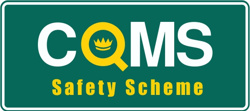Construction Environmental Management is the management and control of potential construction impacts, in relation to identified site environmental constraints and in accordance with:
• Legislative requirements
• Planning requirements
• Site specific studies
• Local knowledge
• Professional judgement
It is usually required for legislative obligation, discharge of conditions and the management of client/public relations.
The Impacts of COVID-19 on Construction Environmental Management
During the initial phases of COVID-19, environmental supervision of construction works was impacted as a result of reduced activity on site a reduction in qualified staff available and a reduction in allocated finances. Whilst the above restrictions have eased over the course of the pandemic, they are still proving an influencing factor in efficient construction environmental management.
A reduction or loss of supervision of environmental issues can result in:
- Complaints from local residents and third parties
- A stop on works under the Environmental Protection Act 1990 s80 and Control of Pollution Action 1974 s60
- Fines and prosecution from The Environmental Agency, for example for breach of a Flood Risk Activity Permit (FRAP), or bat licences
Sentencing guidance introduced on 1 July 2014 toughened penalties for most environmental offences. Under the new approach, the scale of fines varies but can exceed £20 million for the most serious cases involving the largest companies.
The Environment Agency regulatory response to coronavirus recognises that developers may be unable to comply fully with regulatory requirement. They will take account of the extent to which unavoidable non-compliance has been minimised and records have been kept showing why non-compliance occurred.
How Can Management be Maintained?
Management can be maintained by identifying the most likely current impacts, notifying staff who are able to assist (such as foremen, apprentices, nominated personnel and quality supervisors) and providing basic training.
The most likely sources of construction impact include:
- Noise
- Ground contamination
- Mud
- Run-off
- Waste
But can also include:
- Air quality
- Dust
- Light
- Over-use of resources
The key to maintaining management is to fully understand the issues, allocating basic responsibilities to staff and seeking help if needed.
From collating reports relating to site constraints and mitigations, to training existing staff in Construction Environmental Management Planning (CEMP) supervision, our expert team have the experience to help your project go smoothly without adversely affecting costs or timescales.
Contact us today for more information on our CEMP services.







